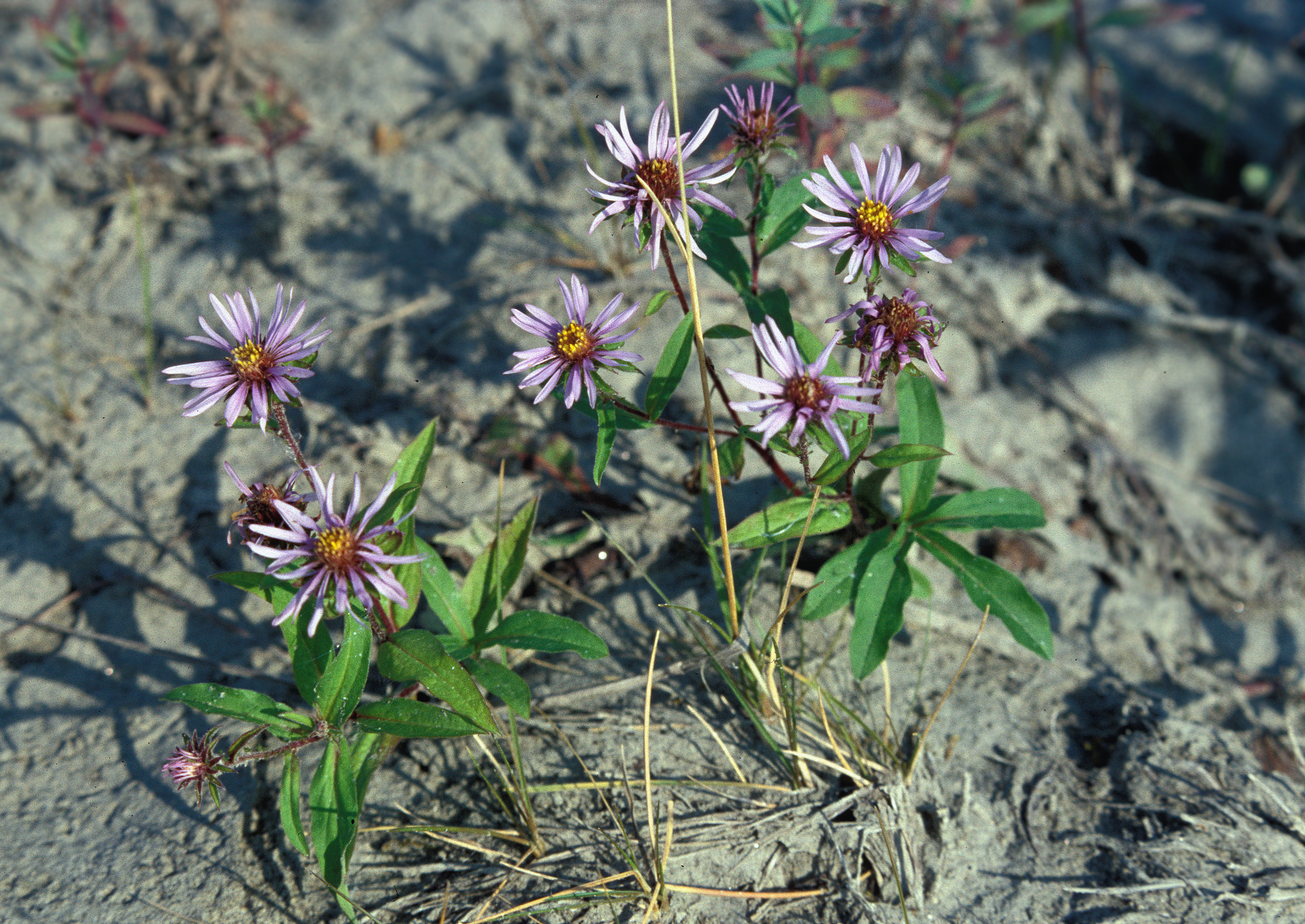- Eurybia sibirica
Taxobox
name = Siberian Aster

image_width = 250px
image_caption = "Eurybia sibrica" in theYukon Territory
status = G5
status_system = TNC
status_ref = Cite web
publisher =NatureServe
title = Eurybia sibirica
work = NatureServe Explorer
url = http://www.natureserve.org/explorer/servlet/NatureServe?searchName=Eurybia+sibirica+
accessdate = 2007-06-14 ]
regnum =Plant ae
divisio = Magnoliophyta
classis =Magnoliopsida
ordo =Asterales
familia =Asteraceae
tribus =Astereae
genus = "Eurybia"
species = "E. sibirica"
binomial = "Eurybia sibirica"
binomial_authority = (L.) Nesom"Eurybia sibirica", commonly known as the Siberian aster or arctic aster, is an herbaceous perennial native to north western
North America and northernEurasia , stretching fromScandinavia toCanada . It is found largely in open areas of subarcticboreal forests , though it is also found in a wide variety of habitats in the region. It is similar in appearance to "Eurybia merita", but their ranges only overlap near the border between the US and Canada, where "E. sibirica" is generally found at higher elevations. The flowers emerge in the summer and display white to pale purpleray floret s as well as and yellowdisc floret s that become purplish as they mature.Distribution and habitat
"E. sibirica" is present in much of the
subarctic region of world, from western North America throughSiberia and to Scandinavia. Its range stretches from the northernRocky Mountains beginning in the south inIdaho andMontana , north to the Canadian provinces ofAlberta andBritish Columbia , farther into theNorth West Territories andNunavut , west toYukon andAlaska , across theBering Strait into Siberia and continuing west throughRussia and intoNorway .citation| contribution=Aster sibiricus| title=Flora Europaea| editor-last=Tutin, T.G.; V. H. Heywood; N. A. Burges; D. H. Valentine; S. M. Walters; D. A. Webb| publisher=Cambridge University Press| contribution-url=http://rbg-web2.rbge.org.uk/cgi-bin/nph-readbtree.pl/feout?FAMILY_XREF=&GENUS_XREF=Aster&SPECIES_XREF=sibiricus&TAXON_NAME_XREF=&RANK=] It is found at heights ranging from sea level up to 2200 metres in sandy or gravely soils in disturbed or open areas ofboreal forest s. It is also present in wet meadows, in open areas ofaspen andspruce woods and alongriparian thickets. In addition, it is common growing in sandy or gravelly stream flats, along stream banks and the shores of lakes, on bluffs, in sand dunes and other sandy places, and in both sub-alpine and mountain meadows.Citation
last =Brouillet
first =Luc
contribution =Eurybia sibirica
year =2006
title =Flora of North America
editor-last =Flora of North America Editorial Committee, eds. 1993+
editor-first =
volume =20
pages =370
contribution-url =http://www.efloras.org/florataxon.aspx?flora_id=1&taxon_id=242321661
place=New York & Oxford
publisher =Oxford University Press
id =]References
Wikimedia Foundation. 2010.
